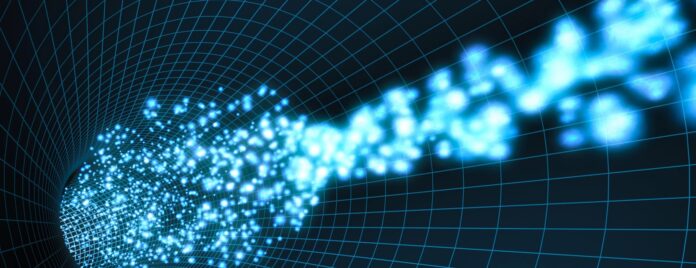Understanding beam dynamics and enhancing accelerator performance depend heavily on the ability to characterize the phase space distribution of particle beams in accelerators. But to infer high-dimensional beam properties, conventional analysis methods either use simplifying assumptions or call for specialized diagnostics.
Now, researchers at the Department of Energy’s SLAC National Accelerator Laboratory, the DOE’s Argonne National Laboratory, and the University of Chicago have developed an algorithm that more precisely predicts a beam’s distribution of particle positions and velocities as it zips through an accelerator. It will help scientists perform their experiments with more reliability.
This general-purpose algorithm combines with differentiable particle tracking to efficiently reconstruct high-dimensional phase space distributions without using specialized beam diagnostics or beam manipulations. It mainly considers information about a usually discarded beam and uses it to create a detailed use se ek picture of the beam.
SLAC accelerator scientist and lead author Ryan Roussel said, “We have a lot of different ways to manipulate particle beams inside of accelerators, but we don’t have a precise way to describe a beam’s shape and momentum.”
Much potentially important information is lost when researchers characterize the positions and speeds of particles in a beam in terms of a few summary statistics that give a general idea of the beam. As an alternative, beam scientists can make several measurements of the beam and attempt to reconstruct, occasionally using machine learning, what the beam would appear to be under various experimental conditions. However, those techniques demand a significant amount of data and processing capacity.

To conduct this work, the team adopted a novel strategy: they developed a machine-learning model that uses our knowledge of beam dynamics to forecast the distribution of particle locations and speeds within the beam, also referred to as the beam’s phase space distribution.
The team applied their model to analyze experimental data from the Argonne Wakefield Accelerator at the DOE’s Argonne National Laboratory to put their theories to the test. The researchers could precisely reconstruct the fine details of the beam using only 10 data points by incorporating the physics of particle beam dynamics with the experimental data. This task required up to 10,000 data points for some machine learning models that do not include a model of beam physics.
SLAC accelerator scientist and co-author Auralee Edelen said, “We’ve shown that we can infer very complicated high-dimensional beam shapes from astonishingly small amounts of data.”
Currently, the algorithm can recreate a model of a beam along its left-right and up-down axes, simulating a pancake-like motion of the particle bunch down the accelerator path. 4D beam phase space reconstruction is this form of reconstruction. The algorithm will then be experimentally tested on the reconstruction of complete 6D phase space distributions, which contain particle locations and speeds along the beam’s direction of travel.
Roussel said, “Overall, the algorithm is a major paradigm shift in how we analyze experimental accelerator data at facilities today.”
Journal Reference:
- R. Roussel, A. Edelen, C. Mayes, D. Ratner, J. P. Gonzalez-Aguilera, S. Kim, E. Wisniewski, and J. Power. Phase Space Reconstruction from Accelerator Beam Measurements Using Neural Networks and Differentiable Simulations. Physical Review Letters. DOI: 10.1103/PhysRevLett.130.145001
